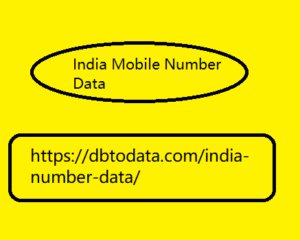Post by account_disabled on Mar 10, 2024 9:14:26 GMT
We have been hearing about Web 3.0 for fifteen years, but only in recent months have the contours of this new term become clearer. This is why I thought I'd write down some basic information here, trying to simplify complex concepts and evolving phenomena for the benefit of my understanding and that of the readers. But let's go in order. Web 1.0, the one that we can approximately place in the period of time from 1991 to 2004, was that of static sites. Those who had the ability to create them used them to display information to a mass of passive users. The contents were represented by texts and images, which did not allow interactions, provided by a static file system, rather than a database.
A read-only network, it was said, “read-only web”. The applications that India Mobile Number Data characterized it were the browser, for accessing sites, and search engines, for finding information. Web 2.0 , the one we are still experiencing today, was conceptualized by web designer Darcy DiNucci in 1999 and popularized by Tim O'Reilly in 2004. The term is used to indicate a more participatory and social network, characterized by services that democratize, making simpler, the creation and sharing of content, but also communication between people. Tools appear that allow the consumer to become a producer.

In recent years we have moved from Blogger and YouTube to Facebook and TikTok, in a span that goes from publishing something to the creation of complex videos, from limited visibility to potentially vast stages. At the same time, this environment is fertile ground for services that encourage the bringing together of producers and consumers, of supply and demand (think of eBay, Amazon for goods or Uber and Fiveer for services). Therefore the applications that characterize web 2.0 are social media and marketplaces. From Web 3.0 to Web3 The concept of web 3.0 began to circulate as early as the early 2000s, but there is no agreement on its characteristics. The father of the World Wide Web Tim Berners-Lee speaks of it as a "semantic web", an environment in which published documents are accompanied by metadata that specifies their semantic context in a format that search engines and other software agents , they can understand. Ultimately a smarter and more useful environment for people seeking information.
A read-only network, it was said, “read-only web”. The applications that India Mobile Number Data characterized it were the browser, for accessing sites, and search engines, for finding information. Web 2.0 , the one we are still experiencing today, was conceptualized by web designer Darcy DiNucci in 1999 and popularized by Tim O'Reilly in 2004. The term is used to indicate a more participatory and social network, characterized by services that democratize, making simpler, the creation and sharing of content, but also communication between people. Tools appear that allow the consumer to become a producer.

In recent years we have moved from Blogger and YouTube to Facebook and TikTok, in a span that goes from publishing something to the creation of complex videos, from limited visibility to potentially vast stages. At the same time, this environment is fertile ground for services that encourage the bringing together of producers and consumers, of supply and demand (think of eBay, Amazon for goods or Uber and Fiveer for services). Therefore the applications that characterize web 2.0 are social media and marketplaces. From Web 3.0 to Web3 The concept of web 3.0 began to circulate as early as the early 2000s, but there is no agreement on its characteristics. The father of the World Wide Web Tim Berners-Lee speaks of it as a "semantic web", an environment in which published documents are accompanied by metadata that specifies their semantic context in a format that search engines and other software agents , they can understand. Ultimately a smarter and more useful environment for people seeking information.
